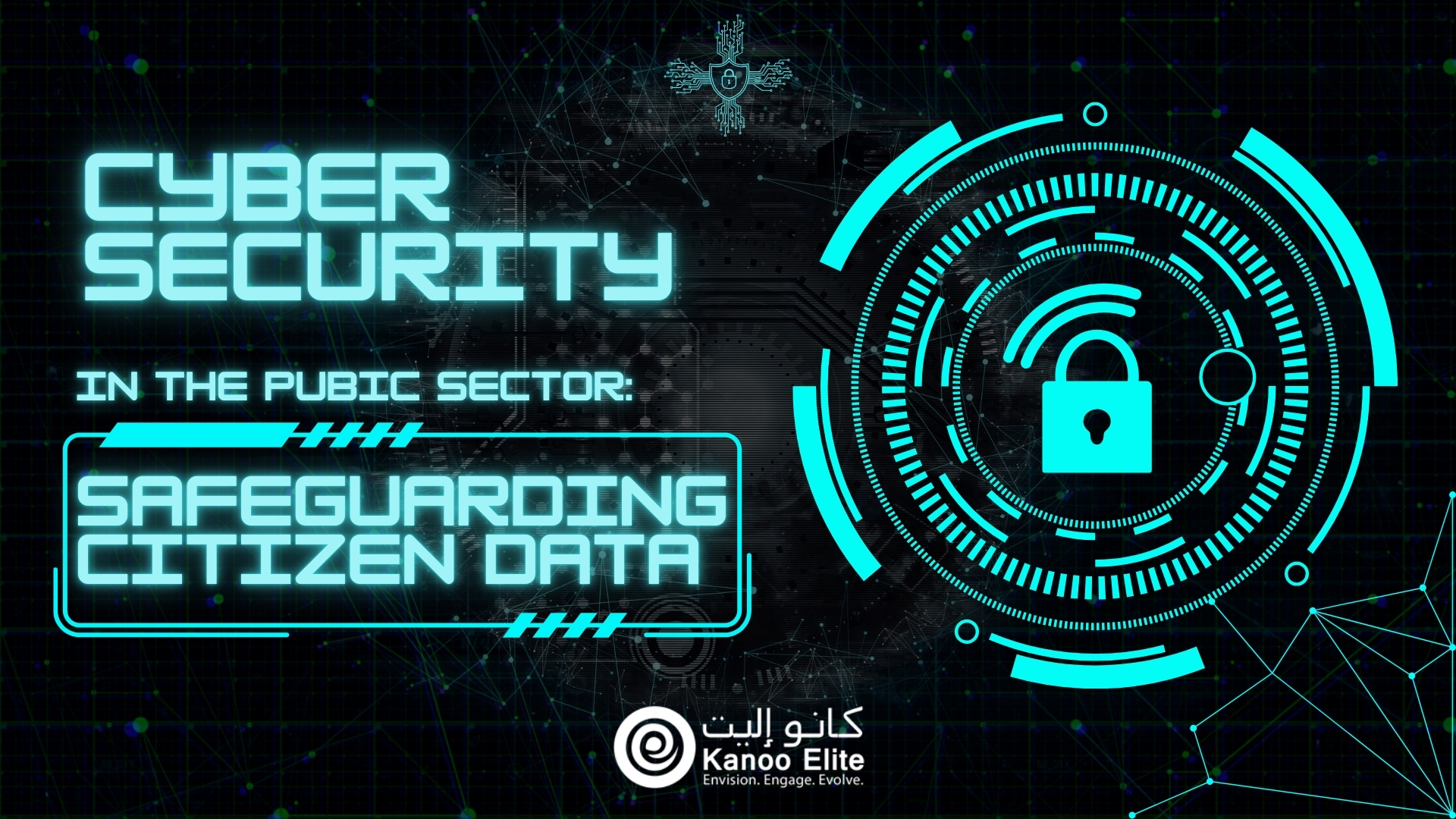In today’s digital era, the public sector is increasingly relying on technology to improve services, streamline operations, and engage with citizens. Governments worldwide are collecting and storing vast amounts of sensitive data, ranging from personal identification details to financial records and healthcare information. However, with this digital transformation comes a growing risk of cyber threats. Cybersecurity in the public sector is no longer optional—it is a critical necessity for protecting citizen data, maintaining public trust, and ensuring national security.
The Importance of Cybersecurity in the Public Sector
Public sector organizations handle massive volumes of personal and confidential data, making them prime targets for cyberattacks. A breach in government systems can lead to identity theft, financial fraud, disruption of essential services, and even threats to national security. Unlike private corporations, which may suffer financial losses and reputational damage, cyberattacks on the public sector can have far-reaching consequences, affecting millions of citizens and the stability of a nation.
Cybersecurity is essential in the public sector for several reasons:
- Protection of Citizen Privacy: Governments collect sensitive personal data, including Social Security numbers, addresses, and health records. Unauthorized access to such information can lead to identity theft and misuse.
- National Security: Cyber espionage and cyber warfare pose significant threats to national security. Foreign adversaries and cybercriminal groups often target government networks to steal classified information.
- Public Trust and Confidence: Citizens expect their governments to safeguard their data. A cybersecurity breach can erode trust in public institutions and lead to widespread concerns about data privacy.
- Continuity of Public Services: Cyberattacks, such as ransomware, can disrupt critical public services, including healthcare, law enforcement, and utilities, causing severe inconvenience and financial losses.
Common Cybersecurity Threats Facing the Public Sector
Governments face a wide range of cyber threats, many of which have evolved in sophistication over time. Some of the most common threats include:
1. Ransomware Attacks
Ransomware attacks involve hackers encrypting government data and demanding a ransom for its release. Such attacks have paralyzed city governments, hospitals, and police departments worldwide. In many cases, agencies are forced to pay large sums to regain access to their systems.
2. Phishing and Social Engineering
Phishing attacks trick government employees into revealing sensitive information, such as login credentials, through fraudulent emails or messages. Social engineering exploits human psychology to manipulate individuals into compromising security.
3. Insider Threats
Employees or contractors with access to government systems can pose insider threats, whether due to negligence or malicious intent. Unauthorized data sharing, weak password practices, and improper handling of classified information can lead to breaches.
4. Advanced Persistent Threats (APTs)
APTs involve prolonged and targeted cyberattacks, often sponsored by nation-states, aimed at infiltrating government networks to steal sensitive information or disrupt operations.
5. IoT Vulnerabilities
The increasing use of Internet of Things (IoT) devices in public infrastructure, such as smart cities and surveillance systems, introduces new security risks. Poorly secured IoT devices can be exploited to launch cyberattacks.
Strategies for Strengthening Cybersecurity in the Public Sector
To safeguard citizen data and protect government systems from cyber threats, public sector organizations must adopt robust cybersecurity measures. Below are key strategies:
1. Implementing Strong Access Controls
Government agencies should enforce multi-factor authentication (MFA) and strict access controls to limit unauthorized access to sensitive data. Role-based access management ensures that only authorized personnel have access to specific information.
2. Regular Security Training and Awareness
Cybersecurity awareness training for government employees can help prevent phishing attacks and other social engineering tactics. Employees should be educated on recognizing suspicious emails, securing passwords, and following best security practices.
3. Investing in Advanced Security Technologies
Governments should invest in modern cybersecurity tools such as artificial intelligence (AI)-driven threat detection, endpoint security solutions, and encryption technologies to safeguard data from cyber threats.
4. Establishing Incident Response Plans
A well-defined incident response plan ensures that public sector organizations can quickly detect, contain, and mitigate cyberattacks. Regular simulations and drills should be conducted to test response capabilities.
5. Enhancing Collaboration Between Agencies
Cyber threats require a coordinated response. Government agencies should collaborate with cybersecurity experts, law enforcement, and international organizations to share threat intelligence and best practices.
6. Implementing Zero Trust Architecture
A Zero Trust security model assumes that no user or device should be trusted by default. Every access request is continuously verified, reducing the risk of unauthorized access to government networks.
7. Strengthening Data Encryption and Backup Policies
Encrypting sensitive data ensures that even if it is intercepted, it remains unreadable to cybercriminals. Regular data backups, stored in secure locations, can help restore services in case of ransomware attacks.
The Role of Legislation and Regulations in Cybersecurity
Governments play a crucial role in setting cybersecurity policies and regulations to ensure public sector organizations adhere to best practices. Key regulations that enhance cybersecurity include:
- General Data Protection Regulation (GDPR): While primarily for the European Union, GDPR sets high standards for data protection that influence global cybersecurity policies.
- Federal Information Security Management Act (FISMA): In the United States, FISMA mandates that federal agencies implement stringent cybersecurity measures.
- National Cybersecurity Strategies: Many countries have developed national cybersecurity strategies to strengthen their defenses against cyber threats.
By enforcing cybersecurity policies and regulations, governments can create a standardized approach to protecting citizen data.
Conclusion
Cybersecurity in the public sector is essential to safeguarding citizen data, maintaining trust, and protecting national security. As cyber threats continue to evolve, governments must proactively adopt strong cybersecurity measures, invest in cutting-edge technologies, and foster a culture of cybersecurity awareness. By implementing robust security frameworks, enhancing collaboration, and staying ahead of emerging threats, public sector organizations can effectively mitigate risks and ensure the safety of sensitive citizen information. Cybersecurity is not just an IT concern—it is a fundamental pillar of modern governance.



